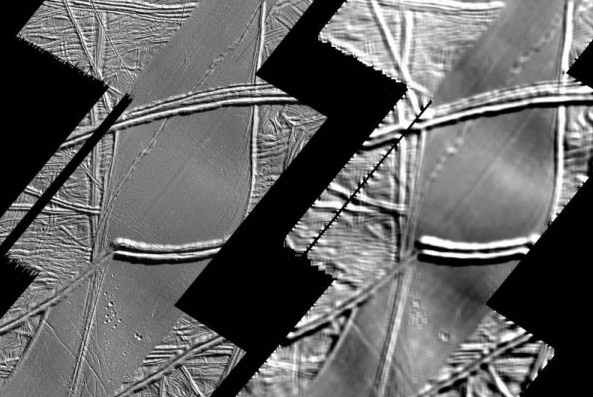
|
Astypalaea Linea is a long smooth area running along these images recorded by the Galileo probe in 1998. The images are different computer treated versions of the same mosaic. On the left, the details on a small scale were emphasized while on the right, in fact the structures on a large scale were exaggerated. On the two versions, the grooves intersected in relief would come from the emergence of new materials passing through the cracks of frozen surface.

|
But we can see more easily on the right the soft rises and descents, of approximately 15 km wide, discovered recently. They were probably formed when the icy surface was compressed by the addition of new materials. Additional evidence that the constraints fold the surface of Europe is offered to us by the presence of smaller cracks and visible wrinkles more easily on the left. Those cover the vast typical anticlines and synclinal undulations familiar to the geologists on the Earth. Although covered with ice, the surface of Europe would be geologically active, traveling on a vast liquid water ocean.